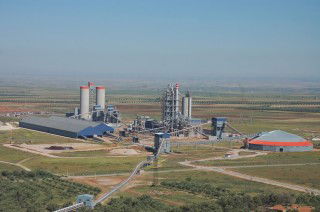Central Asia stands at the brink of an economic and trading revolution as China looks west and implements its ambitious Belt and Road Initiative to reach across into Eurasia and Africa. To drive this transformation, central Asia’s cement industry is already being modernised to provide the necessary building materials.
China’s dream of a ‘New Silk Road’ is fuelling central Asia’s hopes for development and prosperity as the region opens up to the rest of the world through a more unified transport and trading network. The so-called ‘Belt and Road Initiative’ (BRI) will see China invest vast sums of money in redrawing trade links outside its national boundaries and reshaping its influence to reach far into Africa and Europe. First unveiled by Chinese President Xi Jinping in September 2013, the land-based Silk Road Economic Belt (SERB) draws together China, central Asia, Russia and Baltic Europe as it links these areas through extensive rail and road networks. The 21st-Century Maritime Silk Road (MSR) will run from China’s coast to Europe through the South China Sea with shipping lanes through the Indian Ocean and the South Pacific, bringing the Middle East and Africa into the New Silk Road trading network.
